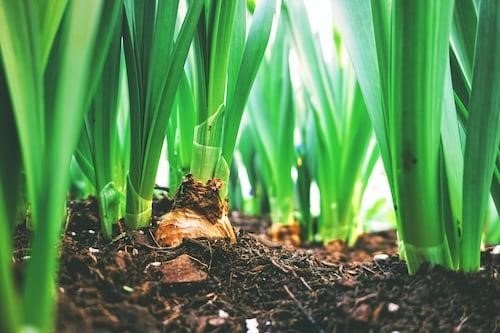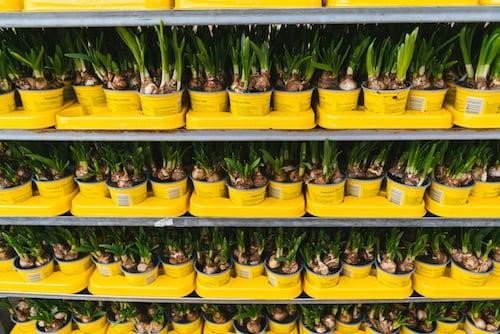Maybe you’ve dug a hole and discovered some strange bulbs, or maybe you neglected to label the bulbs after purchasing them. And, of course, you’d like to know what flowers to expect in spring and how to plant them so that the future plants are strong and in their intended places in your garden. Don’t worry — we can help you figure out what they are!
How Do You Identify Bulbs?
All bulbs look quite similar, especially if you are a beginner gardener. However, they have some distinctive features you can see on https://florium.com/ that will help you understand what plants are in front of you. Of course, there is still a possibility that you’ll be mistaken, but if you follow our guides, you’ll most likely recognize the flowers correctly. Here are some tips on how to identify your bulbs.

First of all, you should identify bulb plants leaves:
- The number of leaves: Some bulbs, like hyacinths, have just one leaf per bulb. Others, like daffodils, have several.
- The shape of the leaves: They can be long and narrow, like those of an onion, or they can be more flattened, like those of a lily.
- The color of the leaves: This can give you a clue as to the bulb type. For example, blue leaves often mean that the bulbs are hyacinths.
If the bulb doesn’t have any leaves, look for:
- The shape of the bulb: Onions and hyacinths are round, while daffodils and lilies are more oval.
- The bulb size: Larger bulbs are usually daffodils or lilies, while smaller bulbs are usually hyacinths.
- The color of the bulb: This can give you a clue as to the type of flower the bulb will produce. For example, red bulbs often mean that the flowers will be tulips.
Once you’ve determined the bulb type, you can look up when it should be planted. For example, daffodils should be planted in the fall, while tulips should be planted in the spring. You can also look for a flower bulb identification chart that may provide you with additional information.
Daffodil Bulb Flowers Identification
If you want to learn how to identify flower bulbs of daffodils, the first thing you should look for is the number of leaves. Daffodils have several leaves per bulb, typically six or more. The leaves are long and narrow and they may be green, blue-green, or yellow-green. The color of the leaves can give you a clue as to the type of daffodil. For example, blue-green leaves often mean that the bulbs are “Janet” daffodils.
Another way of bulb plants identification is by their size. Daffodils are usually larger bulbs, and they are more oval. The bulb color can also give you a clue as to the type of daffodil. For example, red bulbs typically mean that the flowers will be “Stargazer” daffodils. Daffodils should be planted in the fall, and they will bloom in the spring.

Tulip Bulb Flowers Identification
Tulip bulbs are one of the most popular flowers in the world. They come in a variety of colors, shapes, and sizes. Some tulips have multiple colors on the same flower. Tulips are native to Central Asia and the Middle East. To identify their bulbs, look for the following features:
- Tulip bulbs are typically oval or egg-shaped. They can be as small as a grape or as large as an apple.
- The surface of the bulb is smooth, with no bumps or ridges.
- The color of the bulb ranges from white to yellow to brown, depending on the tulip variety.
- The stem is attached to the bulb at the center of the bulb. It is typically green but may be a different color depending on the tulip variety.
- The leaves are also attached to the stem. They are long, narrow, and may be a different color than the stem.
In Conclusion
Now that you know how to identify bulbs, you can be sure that you are planting the right flowers for your garden. Be sure to follow the instructions for planting and care that are specific to each type of bulb. With a little care, your bulbs will bloom beautifully year after year. If you’re still having trouble identifying flower bulbs, you can always bring them to a local nursery or gardening center. They should be able to help you out!

